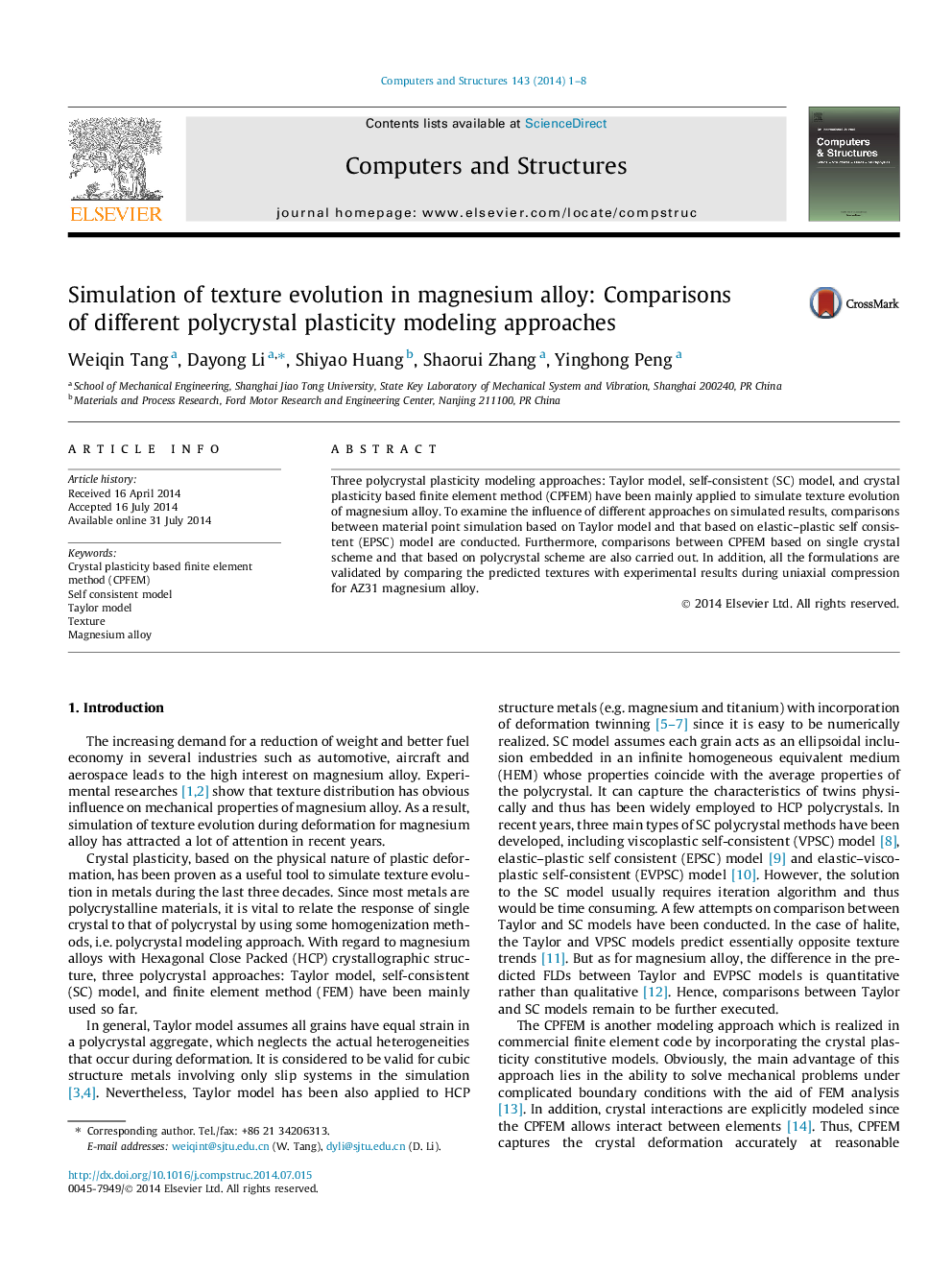| کد مقاله | کد نشریه | سال انتشار | مقاله انگلیسی | نسخه تمام متن |
|---|---|---|---|---|
| 509753 | 865707 | 2014 | 8 صفحه PDF | دانلود رایگان |
• Three main polycrystal plasticity modeling approaches are developed.
• EPSC model gave a more concentrated {0 0 0 1} fiber texture than Taylor model.
• Taylor model and EPSC model favor different deformation mechanisms.
• The differences between Taylor and EPSC are significant for large number of grain.
• The differences between CPFEM based on polycrystal and single crystal are obvious.
Three polycrystal plasticity modeling approaches: Taylor model, self-consistent (SC) model, and crystal plasticity based finite element method (CPFEM) have been mainly applied to simulate texture evolution of magnesium alloy. To examine the influence of different approaches on simulated results, comparisons between material point simulation based on Taylor model and that based on elastic–plastic self consistent (EPSC) model are conducted. Furthermore, comparisons between CPFEM based on single crystal scheme and that based on polycrystal scheme are also carried out. In addition, all the formulations are validated by comparing the predicted textures with experimental results during uniaxial compression for AZ31 magnesium alloy.
Journal: Computers & Structures - Volume 143, September 2014, Pages 1–8
